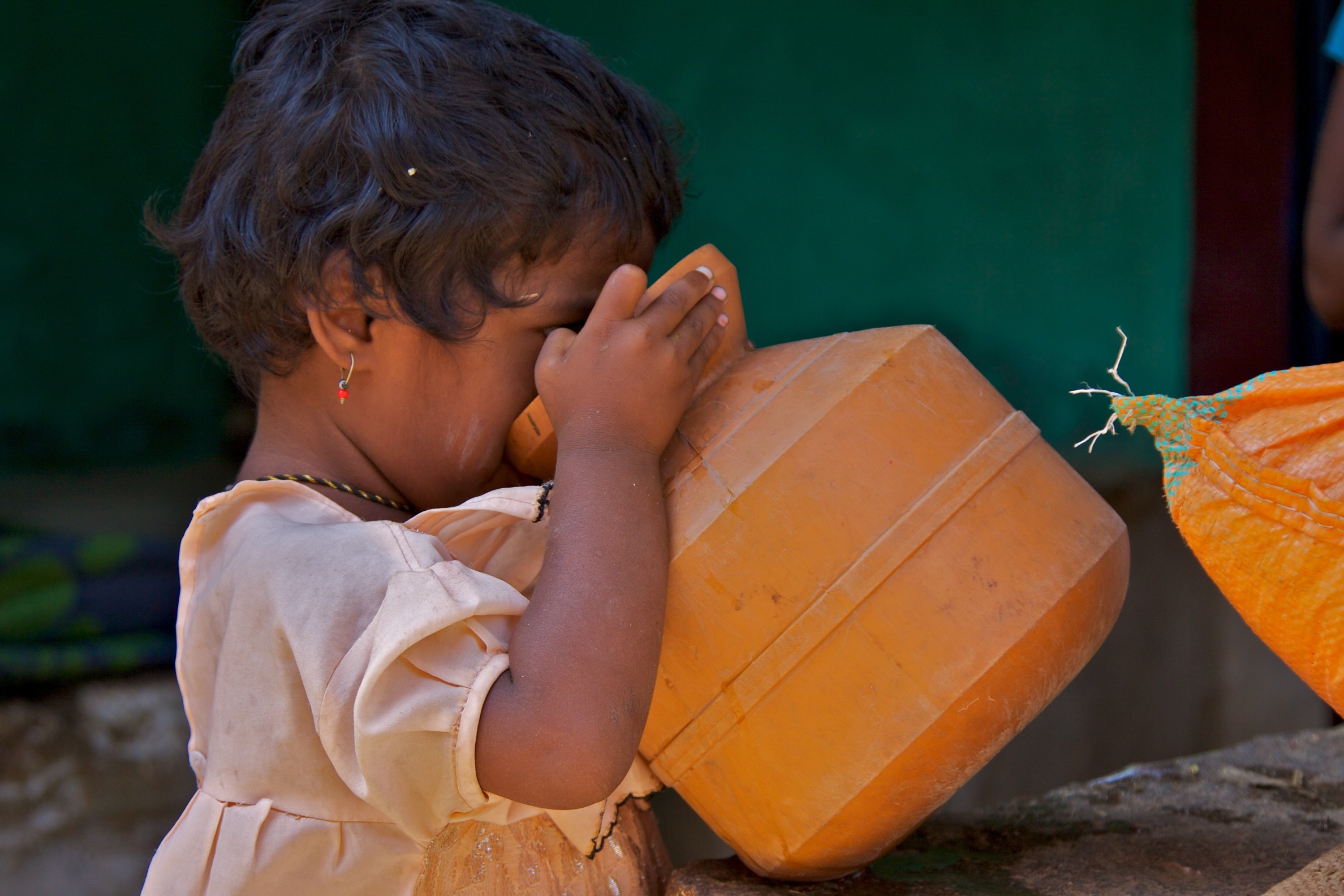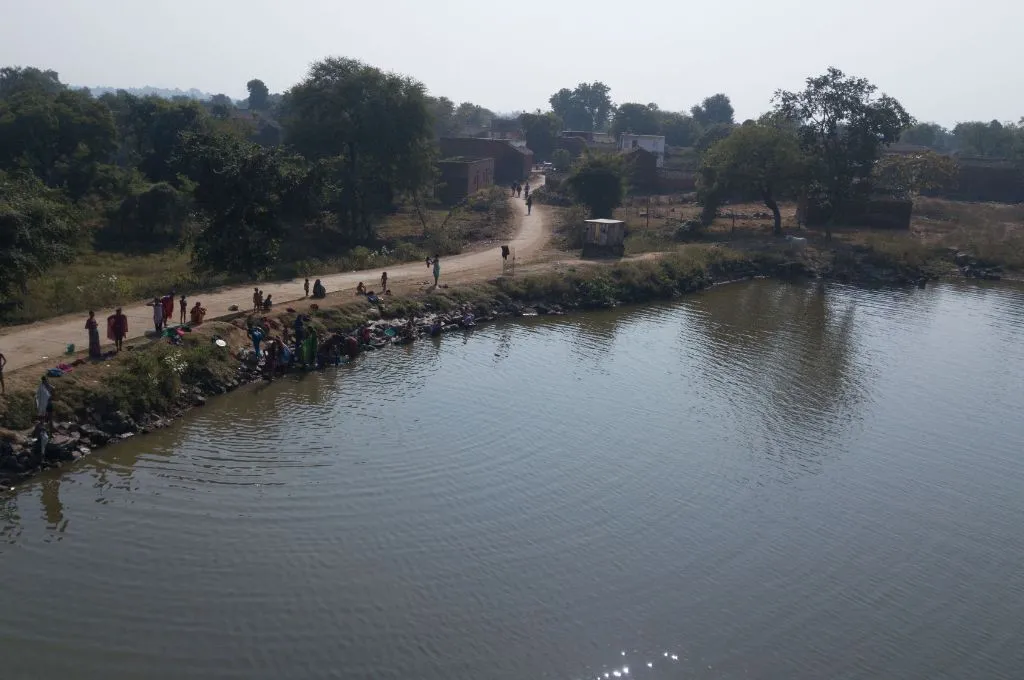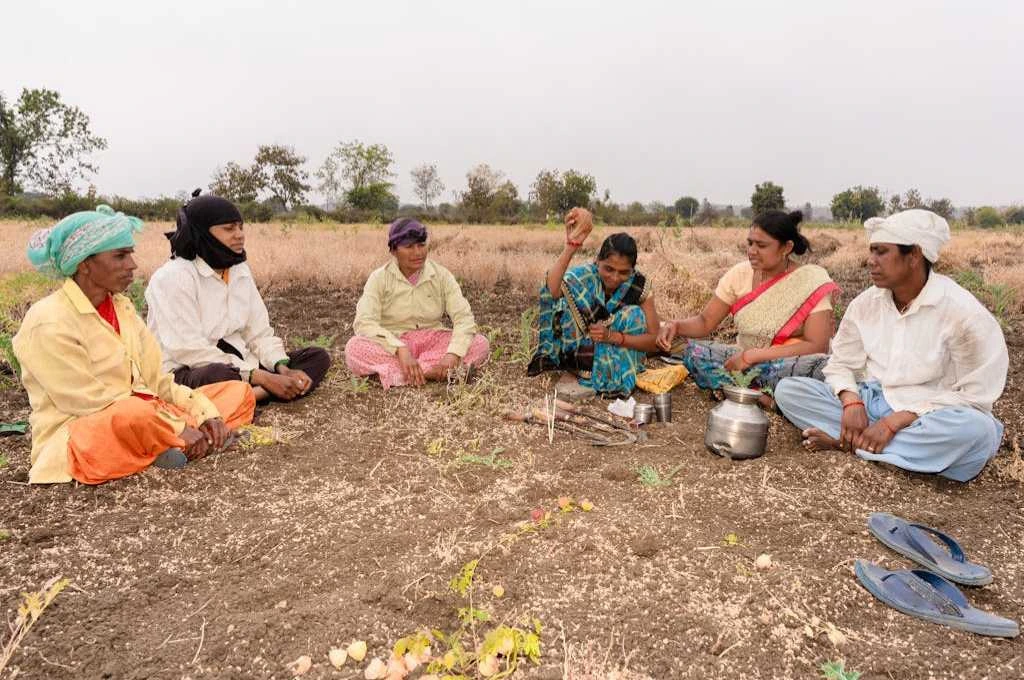KJ Joy is known for his rights-based work in mobilising communities in rural Maharashtra, and for his research work on water and water-related conflicts.
In this interview, he talks about how, as the water crisis in India and across the world continues to grow, and as equitable access to safe water becomes more critical, it is important to keep in mind some basic values that underpin the work that needs to be done. He also talks about how working with local communities—empowering and enabling them to demand what is rightfully theirs, and encouraging them to take ownership of their resources—is still a powerful tool to achieve sustainable social change at the grassroots.
How did you start working on water issues?
After my master’s degree from the Tata Institute of Social Sciences (TISS), I was at a crossroads with what to do with my life. That was when my friend (who later became my wife) and I decided to go and work in rural Maharashtra. We ended up in Sangli district, which is a highly drought prone region. While working there, we realised that more than land (because most people there did own some land), the main constraint was access to water.
Related article: P Sainath—The water crisis is not caused by drought
It was also an area where lots of migration had been taking place, especially to Mumbai. Our time there coincided with a prolonged textile workers’ strike in Mumbai in the early 1980s. As a result, all these workers had come back to their villages, and so we started mobilising them. They began working under the Employment Guarantee Scheme, which was a legal act in Maharashtra, even at that time, to provide employment to people during periods of drought.
But we soon realised that an employment guarantee scheme couldn’t be a permanent solution to drought. We tried to change the character of the employment guarantee scheme, saying that for instance, all works taken up under the scheme should be agriculturally productive or water-related works. We involved the villagers in finding the sites where the work could be done, and worked with them to come up with a people’s agenda.
That led us to the question of water. We identified three small rivers where heavy sand mining was taking place; this spurred a people’s movement against sand mining in these rivers. Through that movement, a very small dam called the Baliraja Dam was constructed by the people themselves. We called it the first people’s dam in the country.
Water was, is, and always will be, a common property resource, which everybody should have access to.
In discussion with the people, we realised that the water was still very limited here, so we asked ourselves—how could we live with limited water norms? How could we ensure equity in access to water? Because water was, is, and always will be, a common property resource, a natural resource which everybody should have access to.
Through some experimentation that we did along with the people, we came up with certain rules and norms. For instance, we said that if a family has access to 3,000 cubic metres of water, all their needs could be met. These norms were accepted by the people, where each family could be given a certain amount of water. That was the first foray to equitable water distribution in that area.
We also worked on dam issues, finding alternatives to very destructive projects, like the Sardar Sarovar dam. It was a highly controversial project with many conflicts. We came up with an alternative to lower the height of the dam, which would have reduced the submergence and displacement by about two-thirds of what it is today. We tried to mobilise political opinion around this too, but at the time, even the Narmada Bachao Andolan did not take a positive view on this, because their stand was still a ‘no dam’ policy, though the dam was already about 90 metres high.
Later, the movement spread to three drought prone districts of Maharashtra—Sangli, Satara, and Sholapur. I was involved in this movement till about 1990, as a full-time activist mobilising people. One of the distinguishing features of this movement was that we also involved the people in a scientific enquiry into alternatives. Scientists and technologists tried to work with people like us—activists—to critically look at drought and come up with possible approaches to drought proofing.

One of the major gaps I’ve seen, after so many years of working on water conflicts, is that we have still not figured out the basis on which to allocate water. | Picture courtesy: Arjun Swaminathan
I then shifted to Pune where some of us set up SOPPECOM – Society for Promoting Participatory Ecosystem Management, an organisation to support grassroot initiatives fighting for equity, restructuring (development) projects, and so on. We got into Participatory Irrigation Management, which was becoming a big thing globally. The understanding was that unless the people, the farmers themselves, managed their water, the problems plaguing irrigated agriculture would not be solved.
Water user cooperatives were formed, and as efforts were scaled up in this area, the cooperatives took over an entire irrigation project, the Waghad Irrigation Project, which irrigates about 5,000-6,000 hectares of land. I think this is the first example in India where a federation of water user associations was able to take over an entire dam and its command areas.
We also experimented with how the landless could get access to water rights. We started with an irrigation project in Osmanabad district, in the Marathwada region in Maharashtra. Through discussions and negotiations, the people there came up with the following principles of equity: all the people who have land will get, say, enough water for two acres of land in the first stage. If there was more water, they would get more, but everybody should get some equal minimum amount of water. They also said that 15 percent of the water they got from the irrigation department and/or the dam, would be earmarked for the landless people.
SOPPECOM was started with a combination of some very well-known people in the water sector at the time. I was privileged to learn from them and work with them. I always say that I stand on their shoulders. So, that has been my journey till now.
How has environmental activism changed over the years?
In the 1980s, for example, many of us were radicalised in the colleges and universities we were studying at, and got involved in these movements. At that time, we all felt that a radical social transformation was just next door—it was going to happen in the next 10 or 20 years. We were all idealists, we wanted to change society, and there was a commitment that came with that. We didn’t look at what careers we would have, or how much money we would make. None of us had anything. Many of the prestigious engineering colleges or social work institutions or even medical colleges, saw drop-outs who were actually working with people’s movements, mobilising people. I would say that was the most fertile period of activism, in the 80s and 90s.
Related article: The politics of groundwater
After the 1990s, there has been a declining trend. I am by no means making a moral judgement on the youth of today. The situation has changed a lot. In those days, things were also not so competitive. There was an overall political ambience which was very conducive to this type of activism.
The political landscape has changed drastically in India. Do you feel there is hope? Do you feel there is another direction activism should take?
I’m hopeful that only through movements, activism, and collective action can things really change. Of course, knowledge is very important. I’d say one of the changes that is taking place presently, as compared to the 80s and the 90s, is that there are many more people and organisations talking about alternatives, and working with people to articulate these on-ground alternatives.
Resistance to destructive projects should be there, but along with that people also need water, energy, and other basic necessities. What are the alternative ways of providing these things? This is also an important question to ask.
I find that many of these efforts are what I call an ‘NGO-ised’ model of working, a ‘project-ised’ mode of working. In the 80s and 90s it was more of a people’s movement. We ate with the people, we slept with them, they would contribute grain, we would cook for ourselves. But today that culture is gone. Nobody wants to live that way.
Nonprofits should not get into large scale implementation. That is the work of the state.
Nonprofits should not get into large scale implementation. That is the work of the state. We can do pilots, we can do innovative projects and learn from them, but ultimately the struggle should be with the state to implement these things. There are huge nonprofits now creating parallel systems and processes. But our role is different. We need to show innovation—how to ground innovative ideas, to wait and see whether it works or it doesn’t. And then do advocacy through people’s movements with the government, on which policies need to change.
What stands out for you today, as opposed to two decades ago, in the kinds of water conflicts we are seeing?
One of the major gaps I’ve seen, after so many years of working on water conflicts, is that we have still not figured out the basis on which to allocate water. If you look at the functioning of different water dispute tribunals in different river systems, they have applied different principles and different norms for allocation of water. As a society and as a nation, I don’t think we have been able to get that right.
Related article: Water is more expensive for the poor than the rich
In the interstate water allocations, for example, if there’s 100 units of water flowing in the river, then that 100 units is divided between the two or three states through which that river flows. But in calculating how much each state should get, what are the actual basic needs of the people of that state, what are the livelihood needs of the people of that state? These are not taken into account when the numbers are being added up. Environmental flows are not taken seriously in the Indian context even now. Newer issues like climate change complicate the matter further. Data is no longer stationary, so making long-term trends and averages are key to evidence-based decision making.
One positive development, however, is that the government is also talking about data today—that we need a centralised system for data that we all agree upon. It becomes difficult when states don’t agree on the river data being presented.
But the main gap still remains—how should water be allocated?
These are edited excerpts from an interview originally published on India Water Portal.





